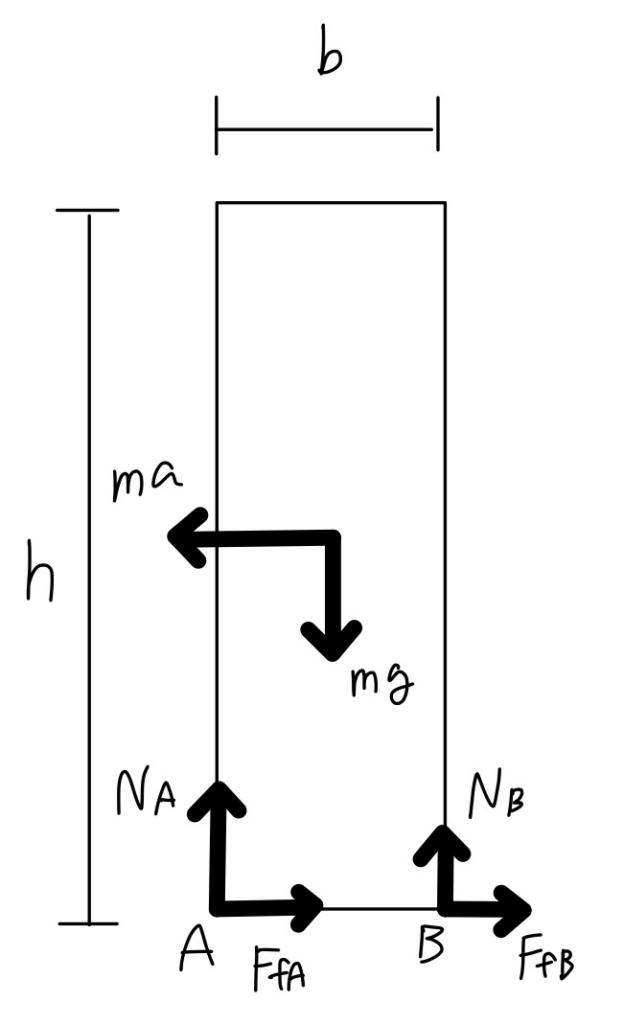This assignment focuses on designing a motion speed control system that can deliver an aluminum rod with a rectangular cross-section onto a wooden surface without tipping over.
To achieve the shortest delivery time, the theoretical maximum acceleration was first calculated. The system was then modeled in SolidWorks using a linear motor as the actuator. Finally, a wheel mechanism was implemented to realize the desired motion while maintaining stability.
1. Theoretical maximum acceleration (a_max)
The following Free Body Diagram was constructed.

Following three equations were made.
Where the coordinate of center of mass is
When the aluminum rod is tipped over, N_b becomes zero. In this case, equation for moment can be simplified into:
Since height is 1 foot and base side is 1 inch long, theoretical maximum calculation was calculated as;
. Calculate Theoretical a_max
- Build V vs t diagram
- Steeper graph (higher acceleration) will lead to higher force.
- Build FBD to analyze forces
2. Model system is motion
- Free body diagram:
- Horizontal: a_max
- Vertical: w/2 at two bottom edge of the bar
3. Try on Linear Motor
- Apply linear motor to bottom base
- See if a_max is correct.
4. Put complete system in SolidWorks
- Add wheels in SolidWorks
- Rotory motor there
- Get real velocity profile
- Rack Pinion mate
